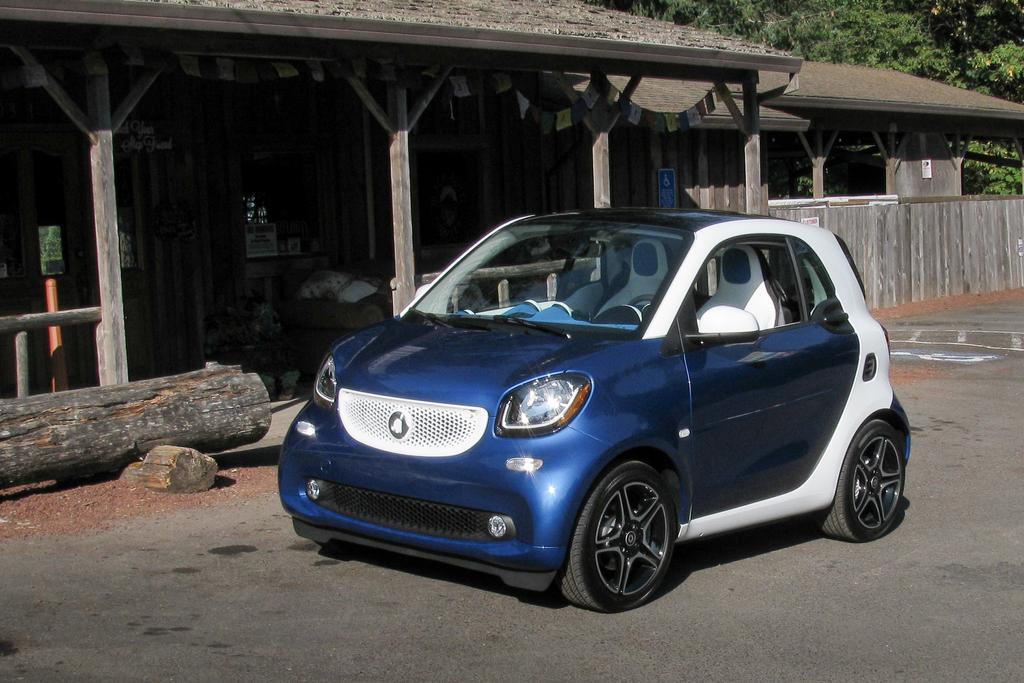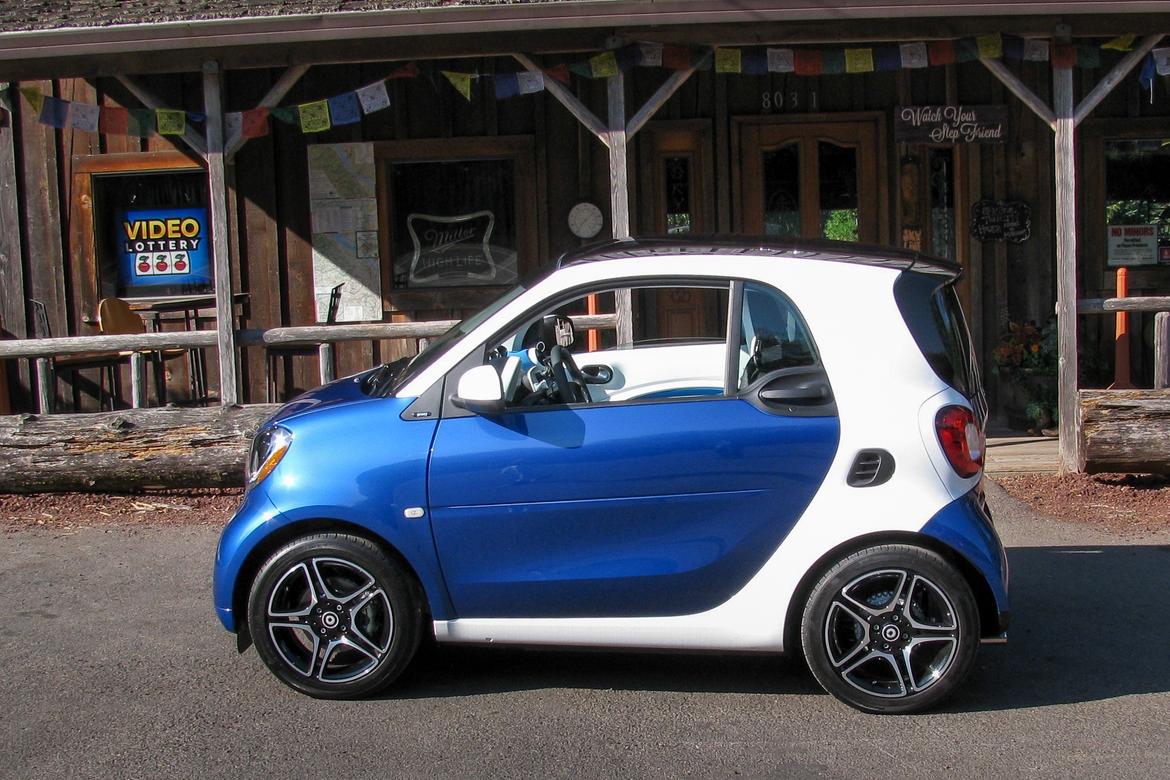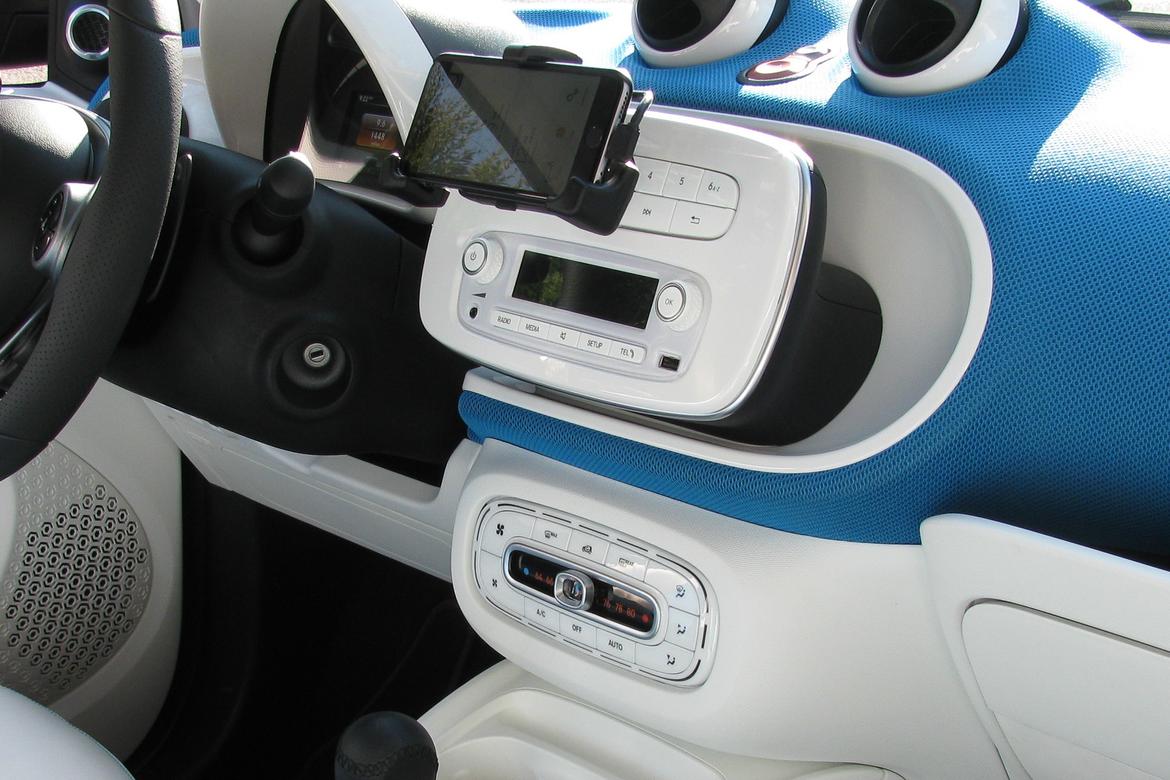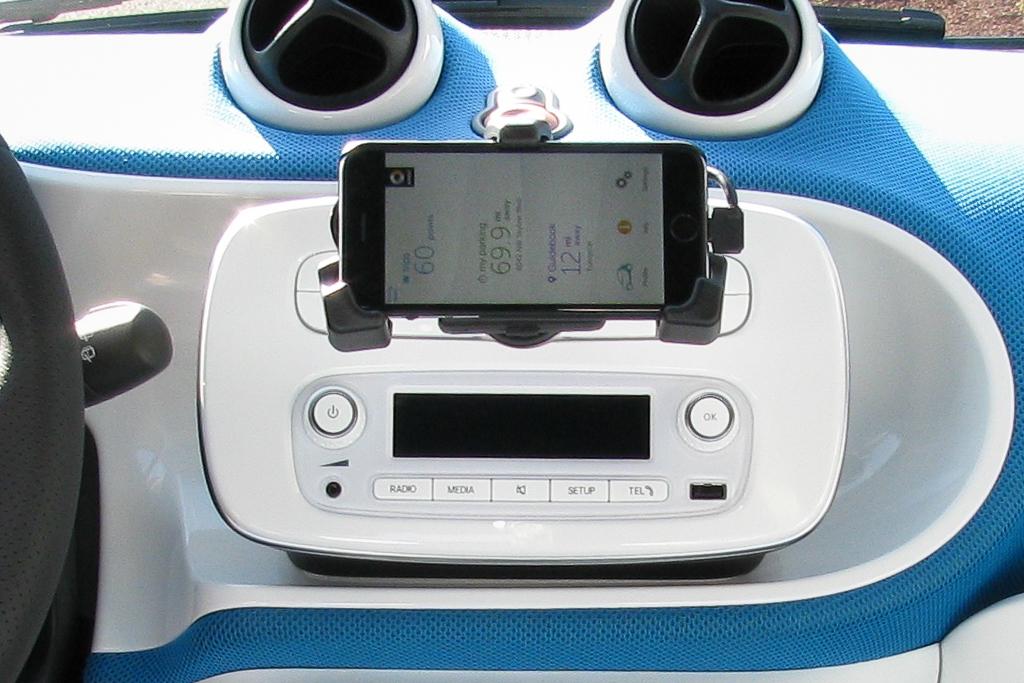
The Smart ForTwo was a car that at one point, some of us couldn't recommend and others didn't see the charms of.
Related: 2016 Smart ForTwo Video
For 2016, Smart has zeroed in on the two biggest flaws of the car — its transmission and its harsh ride — and improved both. It's also spruced up the interior and tweaked the design slightly so that it's wider, but not taller or longer. I drove two different trim levels over two days in Portland, Ore., and while there are improvements to be sure, the ForTwo isn't likely to find universal praise.
How It Drives

2016 Smart ForTwo; Cars.com photo by Bill Jackson
The Smart ForTwo's new dual-clutch automatic six-speed transmission solves the biggest issue I found in my time with the previous unit: unpredictable shifts. In the old car, I swear, I never got the same response from the car two times in a row. With the new dual-clutch you get the shift you expect nearly every time. During a hilly section of my test drive, I noticed an abrupt shift or two but the transmission is a vast improvement over the old model.
However, the ForTwo remains modestly powered; it has just 89 horsepower. It doesn't zip from light to light, but it is acceptable if you're willing to trundle from place to place in the city.
On the highway, when you do need to pass, the transmission kicks down and you get a lot of engine noise, but it still doesn't shoot forward. It remains a car in which you need to anticipate when you're going to pass. I tested the top-of-the-line Proxy model that had paddle shifters, but even when holding onto gears longer in that car before shifting, the power was still modest.
This is not unusual in this class of very-small economy cars that includes Chevrolet's Spark or Scion's iQ. The Smart ForTwo is certainly no barn-burner, and it's noisy on the road.
For the first time, the Smart ForTwo will be offered with a manual transmission, but I was unable to test that model. It would be interesting to see if that transmission's five-speed setup offers the ability to increase performance.
Mileage has not been confirmed by the EPA, but Smart expects mileage figures of 33/39/36 mpg city/highway/combined with the automatic and 32/39/36 mpg with the manual transmission. The ForTwo requires premium fuel, just as its predecessor did.
If the drivetrain is better but not exceptional, the improvements to the ride just might be. Through a combination of retuning the suspension, increasing the car's width and fitting tires with higher sidewalls to provide more cushioning, the Smart ForTwo's ride is now acceptable. I tested it on very smooth roads, so I can't give it the full test until I get it on the crumbling Chicago streets, but I was impressed.
Where the old model had a ride akin to sitting on a skateboard, the new model feels like an actual small car, one that rides firmly. You actually are confident that there is a suspension between you and the wheels, and that it's working. It absorbs imperfections in the road better so that it feels more composed.
It still can get bashed around on the biggest bumps in a way that competitors such as the Fiat 500 don't, but it's a definite, measurable improvement.
What is impressive — and fun — is the turning circle. Smart says the turning circle is 22.8 feet, but to really get a sense of it, you have to drive it. It's a lot of fun to change directions in a parking lot almost as easily as if you're walking. Power steering is now standard, so there's not a lot of effort required to make these maneuvers either.
Interior

2016 Smart ForTwo; Cars.com photo by Bill Jackson
I wasn't wowed by the previous model, finding that while the controls and interior looked OK, it fell short when it came to actually touching and using the controls.
The dash is now covered with a meshlike material that's meant to emulate high-quality running shoes. It looks and feels nice. The same goes for the steering wheel and gearshift, both of which are a good size and feel like they belong in a car of this caliber or slightly higher. It's how a car should feel, no matter how small it is. The same sensation carries over to the window switches — power windows are also now standard — climate controls and other areas of the cabin.
Another improvement is that it appears Smart has more aggressively tinted the standard sunroof. I drove both Proxy and the Prime (next-highest trim) over two extremely sunny days, especially for Portland, and never felt like I was being baked.
However, if there's something the Smart still struggles with, it's cargo storage. My co-driver and I each had one small carry-on-sized bag, and they had to be squeezed into the rear cargo hatch. Also, in the cabin, there is not a ton of spaces to put things.
Smart has tried — putting a small shelf above the glove box, a small bin by the passenger's legs, and providing two door pockets and three cupholders — but I still found myself searching for cubbies for my phone and my camera. These are the kinds of things that aren't such a big deal over two days of driving a car, but most owners tend to accumulate stuff in their cars. ForTwo owners will have to be diligently organized.
Not all small cars feel small inside; our long-term Honda Fit offers surprisingly cavernous interior room for a small package. But what you see on the outside of the tiny ForTwo is what you get on the inside.
Electronics

2016 Smart ForTwo; Cars.com photo by Bill Jackson
Smart is jumping full into the water of using a smartphone as an extension of the car's controls. The ForTwo uses an app — called smart cross connect — that offers navigation and other controls. While the app is free, the cradle that holds your phone where a center touch-screen is located costs $100.
Interestingly, when I first got in, I wondered why I'd want my phone blocking the audio controls, but it made sense when it was explained that the phone, using the app, controls all the functions that are blocked by the cradle. I still prefer physical buttons and I don't like how the cradle looks, so I'm not sold on it yet.
But from an electronics/connectivity perspective, it's an interesting approach that everyone from carmakers to Apple and Google are jumping on. The cross connect app was still "in beta" to borrow a tech term — and many of us driving noticed issues, mostly with the navigation.
Smart says it has about a month to get all the kinks worked out, and hopefully it will put that time to good use. Smart also says it is planning on a traditional, hard-mounted center touch-screen for the future.
In the Market
The Smart ForTwo remains an impractical car for most, one that's modestly powered and isn't the cheapest city car on the market either. The least-expensive ForTwo model starts at $15,400 including $750 for delivery. The automatic transmission is a $990 option.
Chevy's Spark starts at $13,095 (including destination) with a manual, while Scion's iQ only comes with an automatic and starts at $16,460, a nearly identical price to an automatic Smart.
And while it's a lot of fun to weave the ForTwo through tight spaces, do U-turns in the middle of the road and, basically, not ever have to worry about fitting in a parking space, it still forces you to make a lot of compromises. At least now, thanks to the improvements, those compromises aren't as numerous as they once were.
Shoppers will have to want to buy a Smart car before choosing a competitor because there isn't enough to vault it past them on a level playing field.
No comments:
Post a Comment